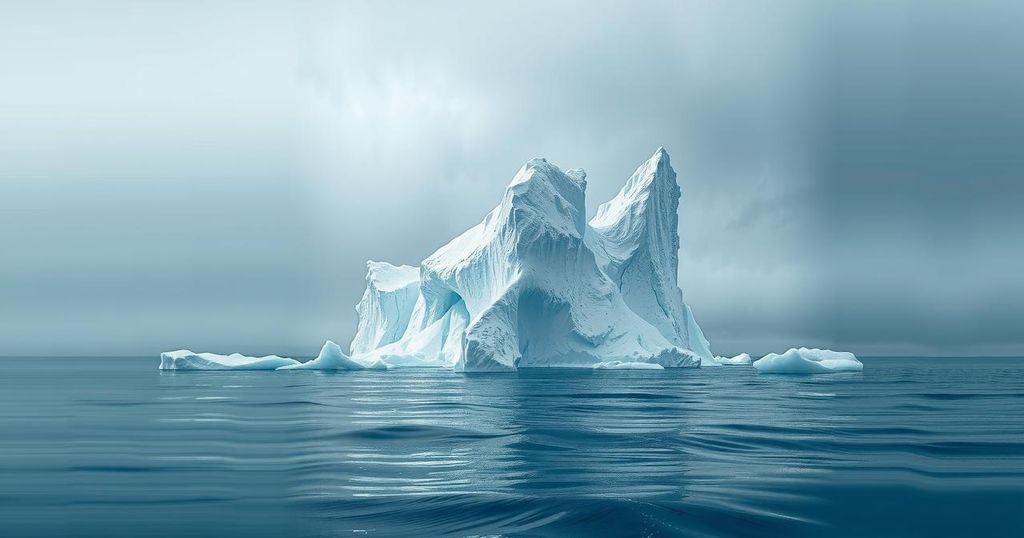Recent satellite data reveals a record low in polar sea ice, dropping to 6.08 million square miles on February 13, 2025. This rapid melting indicates potential climate system shifts with widespread consequences. Polar ice regulates temperatures but its loss results in increased ocean warming, rising sea levels, and adverse effects on wildlife. The situation necessitates global efforts to reduce emissions for a sustainable future.
Recent satellite data has shown a startling reduction in sea ice coverage in both the Arctic and Antarctic regions, reaching an unprecedented low of 6.08 million square miles (15.76 million square kilometers) on February 13, 2025. Scientists express concern that such rapid melting could signify a perilous shift in the Earth’s climate system, affecting conditions far beyond the polar areas.
Polar ice serves as a crucial component of Earth’s climate regulation, acting as a natural thermostat by reflecting sunlight and maintaining global temperatures. Its melting unveils darker ocean water that absorbs more heat, thereby exacerbating global warming through the albedo effect. Researchers assert that this escalating cycle constitutes a pivotal cause behind the swift reduction in polar ice.
Walter Meier from the U.S. National Snow and Ice Data Center has documented these alarming changes, noting that Antarctica’s ice loss appears to have transitioned into “a new regime of lower ice extents.” A study from 2024 by the Space Geophysics and Oceanography Laboratory corroborates the significant reductions in Arctic and Antarctic ice, attributing this to climate change, particularly due to rising ocean temperatures.
The consequences of polar ice melting extend to rising sea levels, posing an increased risk of flooding to coastal cities such as New York, Miami, and Jakarta. As ice sheets in Greenland and Antarctica continue to decline, millions of individuals residing in low-lying areas face growing threats. Furthermore, the loss of ice disrupts ocean currents, particularly the thermohaline circulation, which influences global weather patterns.
Wildlife impacts are also significant; species such as polar bears, seals, and walruses are losing essential hunting and breeding habitats. Additionally, penguin populations in the Antarctic are experiencing a reduction in habitat availability. The instability of ice poses a risk of decline or extinction for many species, creating broader ecological disturbances.
Satellite data on February 15, 2025, showed a slight rise in ice coverage to 6.11 million square miles (15.84 million square kilometers). However, this remains substantially below the historical averages. Analysts have observed a marked shift since 2016, when Antarctic sea ice began an abrupt decline with no signs of recovery, suggesting a potential permanent transformation in climate patterns.
The upcoming months will prove critical in establishing whether polar ice can rebound or if such record low levels will become the standard. Researchers are diligently observing the effects of warmer ocean temperatures and shifting weather patterns on the refreezing of ice. Experts concur that mitigating global carbon emissions remains the sole method to slow down this troubling trend, emphasizing the imperative for nations to act swiftly in reducing greenhouse gases and transitioning to sustainable energy sources.
In summary, the unprecedented decline in Earth’s polar ice signals a potentially dangerous climate shift with far-reaching implications. The loss of ice impacts global temperatures, sea levels, and weather patterns, posing threats to coastal populations and wildlife. The future of polar ice relies on global concerted efforts to curb emissions and promote sustainable practices, making it crucial that action is taken promptly. The situation demands urgent attention, as the next few months will determine the resilience of Earth’s polar regions.
Original Source: dailygalaxy.com




